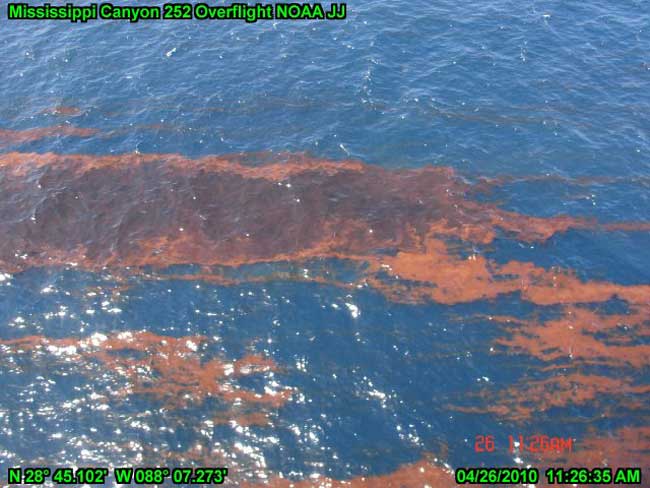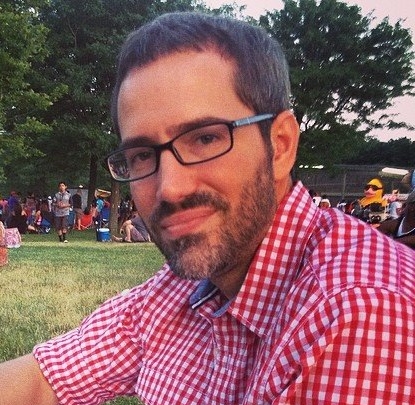Gulf Oil Spill Is Testing Ground for Future Cleanup Tech

The Deepwater Horizon oil spill in the Gulf of Mexico is pushing current oil cleanup technology to its limits, but also serving as a testing ground for futuristic decontamination methods.
Some cutting-edge imaging techniques that let responders size up slicks better, as well as novel engineering solutions such as a deep-water oil containment dome could see use in the Gulf of Mexico in coming days and weeks, experts say.
But other long-touted measures, such as oil-eating microbes, however, are not yet ready to fight large spills.
Responders have their hands full
As the Deepwater Horizon cleanup effort is demonstrating, many of the current methods of cleaning up oil spills are decidedly low-tech.
At least 70 response vehicles have fanned out in the Gulf and are using conventional physical containment methods such as floating tubes called booms and skimmers that slurp up mixed oil and water from the sea surface.
Tens of thousands of gallons of chemicals called dispersants that break the crude oil down into fine droplets for dilution (and eventual breakdown by oceanic microbes) have also been sprayed thus far.
Get the world’s most fascinating discoveries delivered straight to your inbox.
Dispersants have proven far more effective than skimmers, which may only be able to soak up 10 percent of the spill, the Coast Guard said today.
Controlled burns of patches of oil are also set to start tomorrow, an approach sometimes adopted when containment and recovery become impossible.
Beneath the ocean, robots are trying but so far failing to fix the valve that would shut off the oil leaking from pipes that once connected to the Deepwater Horizon rig that caught fire on April 22.
BP, owner of the rupturing oil reservoir under the ocean floor, has said it will begin drilling an 18,000-foot (5,486 meters) relief well tomorrow, in part to relieve pressure from the main well. But the $100 million operation will take months.
Gerald Graham, president of Worldocean Consulting, a marine oil spill prevention and response planning firm based in British Columbia, described the response as a "full-court press."
But despite the Herculean efforts, cleanup crews may not prevent the dangerous oil slick, now spanning 600 miles (about 970 kilometers), from making landfall in areas along the Gulf Coast in several days. Envisioning the slick
Conventionally, responders fly over slicks in aircraft and report back information to a command center about a spill's extent. Recently developed multispectral and thermal imaging sensors have aided in this effort by seeing slicks in ways human eyes cannot.
Oil and other hydrocarbons look different than water, both in the light that our sees and also in infrared, or "heat" signatures.
Two NASA satellites with the Moderate Resolution Imaging Spectroradiometer (MODIS) instrument onboard have already given responders a multispectral "God's-eye" view of the spreading blemish of crude oil in the Gulf of Mexico.
But the distant satellites cannot glean important information of slick thickness, which is crucial for knowing where skimmers can do the most good in gobbling up hefty, floating deposits.
"With this particular spill, it is so large they can use satellite imagery to get a gross outline, but they are not able to get thickness variations," said Judd Muskat, an environmental scientist the Office of Spill Prevention and Response (OSPR) at the California Department of Fish and Game.
For that, responders will likely turn to OSPR's special, portable multispectral sensing equipment for use on aircraft. Muskat said he and his colleagues expect to be deployed to the Gulf of Mexico in the coming days to assist with the disaster effort.
A benefit of the OSPR multispectral and thermal imaging system is that it helps takes human subjectivity during flyovers out of the equation, Muskat said.
In the future, Muskat hopes that multispectral systems will be incorporated into unmanned aerial vehicles, or drones, to beef up coverage and data collection.
Digitizing the disaster plan
Another computerized method for fighting the Deepwater Horizon spill is special software programs such as ADIOS2 (Automated Data Inquiry for Oil Spills).
Developed by the National Oceanic and Atmospheric Administration (NOAA), ADIOS2 helps responders make real-time decisions about where to deploy their cleanup resources.
With ADIOS2, "you just key in all the details of the parameters of the spill, from the type of oil to wave conditions, winds, sea temperatures, what have you, and the software tells you the fate of the oil over an extended period," said Graham, who has worked on software solutions for oil spills.
These and other programs will improve as they incorporate more data from different sources, including satellites, and each spill is a learning experience, Graham said.
Putting a lid on the spill
Among the innovative options under consideration for quashing the Deepwater Horizon spill at its source is a giant underwater containment dome being investigated by BP and the Minerals Management Service of the United Sates Department of the Interior.
The dome would cap the leaking wellheads and then funnel the captured oil to the Gulf's surface for collection.
The Coast Guard has said that such collection domes have been used in the past, but never at the considerable depth of 5,000 feet. Details remain sketchy about the dome's specifications and how it might work, though the Coast Guard has admitted it will likely take two to four weeks to finish construction.
Microbes to the rescue?
For decades now, an area of great promise in the remediation side of cleanups has been microbes that break down oil and remove it from the environment. Many thousands of organisms do this in the wild and efforts using microbes to fix up toxic sites have succeeded on land.
However, breeding legions of oil-eating microbes and shipping them to the site of an emergency spill at sea is not really practical yet, said Larry Nies, a professor of civil engineering at Purdue University
For starters, the chemical composition of crude oil or other hydrocarbons spilled in waterways varies widely, depending on the oil's geological origin, and some of those compounds take longer for microbes to digest – if they are even edible at all.
"In a spill situation, time is of the essence," Nies said. "Even in the best of circumstances, [biological breakdown] is not an instantaneous process."
Plus, floating crude oil on the water does not readily lend itself to biological degradation, because the organisms cannot penetrate into the crude oil; rather, they munch at the boundary where water and oil meet.
For the foreseeable future, spill response will still rely on trapping the oil just as it does today, said Nies. "Physical means are generally most effective if you get there in time [and are] the first line of defense."
As the spreading slick in the Gulf of Mexico is still some 20 miles (32 kilometers) offshore, it's still possible that response crews can corral the spill before it reaches land. But the window of opportunity to do so is rapidly closing.
"If [the responders] are thinking about setting this thing on fire, they must be getting desperate," Nies said. Denise Chow contributed to the reporting of this piece.



